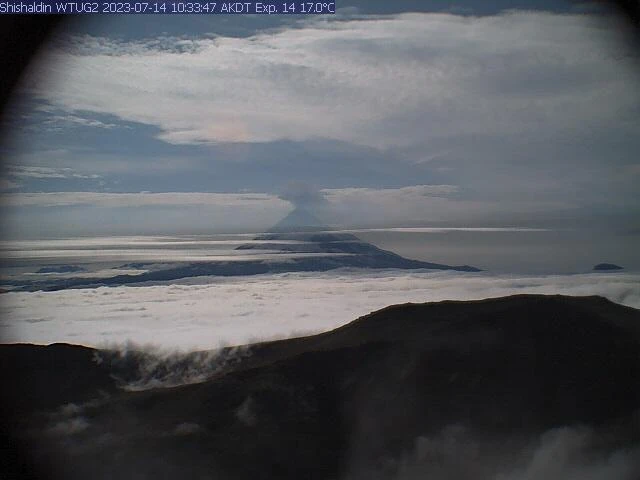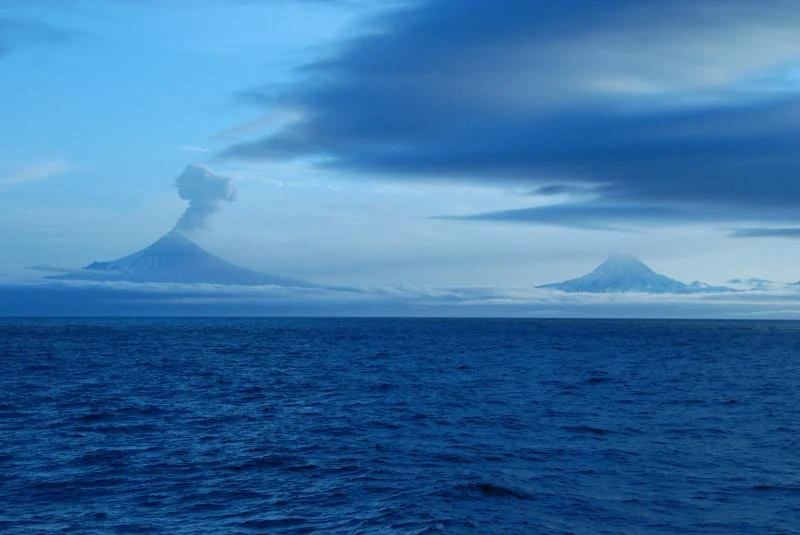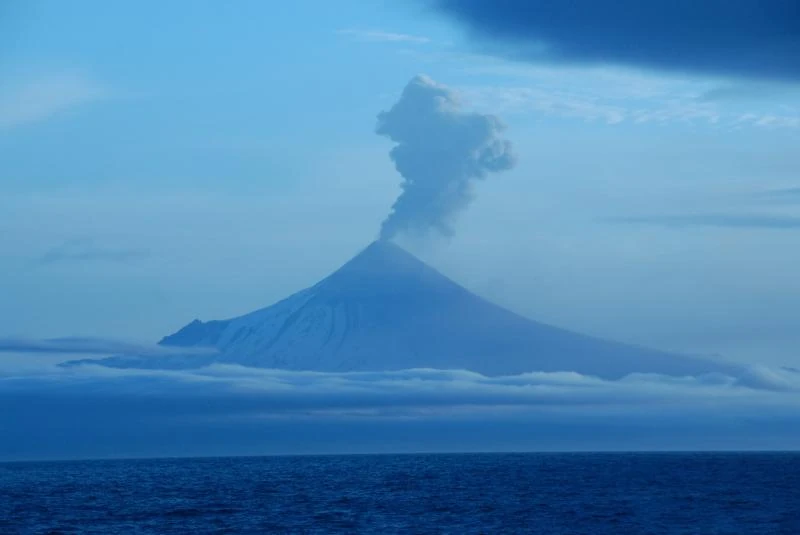Significant explosion at Shishaldin volcano, Alaska

A significant explosion occurred at Shishaldin Volcano in Alaska, U.S. at 09:09 UTC on July 14, 2023. The Aviation Color Code remains at Orange.
The explosion produced an ash cloud that initially reached 9 to 12 km (30 000 to 40 000 feet) above sea level and drifted south over the Pacific Ocean. A second smaller explosion occurred at 15:10 UTC and reached approximately 4.5 km (15 000 feet) above sea level.
The National Weather Service issued a SIGMET for these events and suggested a maximum cloud height of 7.6 km (25 000 feet) above sea level for the drifting ash cloud. Web camera images and pilot reports show continued low-level ash emissions, including a small ash cloud near the summit around 18:30 UTC.



On July 13, 2023, the Alaska Volcano Observatory (AVO) raised the Aviation Color Code to Orange and the Alert Level to Watch in response to increased activity at Shishaldin Volcano.
The public is advised to stay away from the volcano and to be aware of the potential for ashfall in the area. Ashfall can cause respiratory problems and can damage vehicles and equipment.
Eruptions from Shishaldin have produced minor and on occasion significant ash clouds in the past. These can occur with little warning.
Shishaldin is monitored by local seismic and infrasound sensors, web cameras, and a telemetered geodetic network. The local monitoring network is partially impaired, therefore AVO is also using nearby geophysical networks, satellite data and regional infrasound and lighting data to detect activity.
Geological summary
Shishaldin is the highest and one of the most active volcanoes of the Aleutian Islands. The 2857 m (9 379 feet) high, glacier-covered volcano is the westernmost of three large stratovolcanoes along an E-W line in the eastern half of Unimak Island.
The Aleuts named the volcano Sisquk, meaning “mountain which points the way when I am lost.” A steady steam plume rises from its small summit crater. Constructed atop an older glacially dissected volcano, it is Holocene in age and largely basaltic in composition.
Remnants of an older ancestral volcano are exposed on the west and NE sides at 1 500 -1 800 m (4 920 – 5 900 feet) elevation. There are over two dozen pyroclastic cones on its NW flank, which is blanketed by massive aa lava flows.
Frequent explosive activity, primarily consisting of strombolian ash eruptions from the small summit crater, but sometimes producing lava flows, has been recorded since the 18th century.2
References:
1 ALASKA VOLCANO OBSERVATORY DAILY UPDATE – U.S. Geological Survey – July 14, 2023
2 Shishaldin – Geological summary – GVP
Featured image credit: Lee Cooper


Commenting rules and guidelines
We value the thoughts and opinions of our readers and welcome healthy discussions on our website. In order to maintain a respectful and positive community, we ask that all commenters follow these rules.